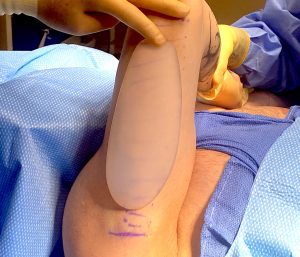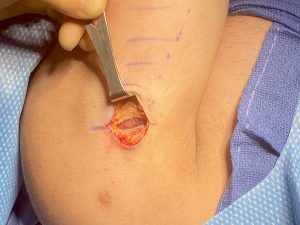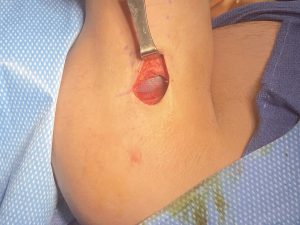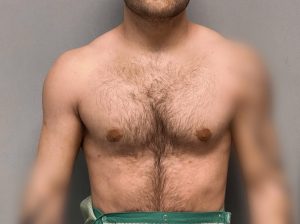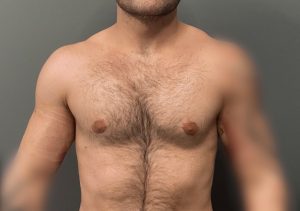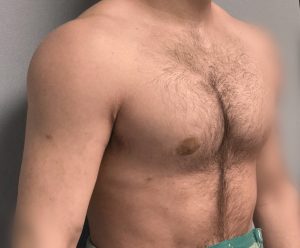Background: Muscular enlargement of the upper arms is most commonly and successfully done by weight lifting. Arm implants exist to achieve this similar effect to either bypass the weightlifting process or to enhance it beyond what one can do on their own. Arm implants have one advantage over weightlifting …they are permanent and don’t require maintenance for a sustained effect. Their disadvantage is that it is a surgical procedure that has certain risks and complications.
The upper arm has two well known muscles which can be augmented, the bicep and tricep muscles. Each of these muscles can be enlarged by special designed implants that can be placed above (subfascial) or below the muscle. (submuscular) The subfascial pocket is the most commonly used for both muscles as it is the most straightforward to access and get an implant into place. While subfascial tricep implants placement due very well and have few migration/displacement problems, the subfascial bicep implant can have more problems associated with it. Part of the reason is that the access to place it is through an axillary incision where the pocket and implant placement are not done directly along the axis of the muscle. (unlike tricep implants) The other reason is that bicep fascia is thinner than tricep fascia. As the bicep area is more visually exposed any asymmetry between the two sides is readily seen. This also makes any implant edging along the thinner fascia more easily seen.
An alternative to subfascial placement for bicep implants is the submuscular pocket location. Less commonly used the submuscular pocket has the advantage of being covered by the entire muscle where implant visibility, edging and migration are very unlikely to occur. One technique to get under the bicep muscle for implant placement its the medial arm incision.
Case Study: This male had adequately built up his shoulders (deltoids and trapezius) boy weightlifting and had his chest augmented with pectoral implants. But he could not build up his arm muscles to match the other improvements in his upper torso muscles.
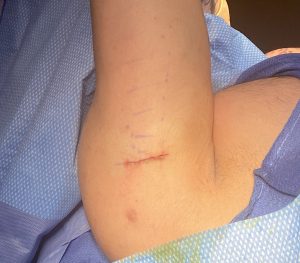
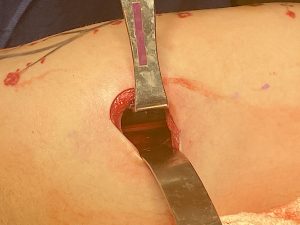

Submuscular bicep implant placement differs from the subfascial technique by 3 differences; 1) a small mid-arm incision, 2) a much smaller implant is needed and 3) the presence of the musculocutaneous nerve in the path of dissection.

Case Highlights:
1) Upper arm muscle augmentation is done by a combined bicep and tricep implants.
2) Bicep implants can be be placed under the fascia on top of the muscle or under the muscle on top of the bone…each with their own advantages and disadvantages.
3) Submuscular bicep implant placement will encounter the musculocutaneous nerve in making the pocket and getting the implants into position.
Dr. Barry Eppley
Indianapolis, Indiana




